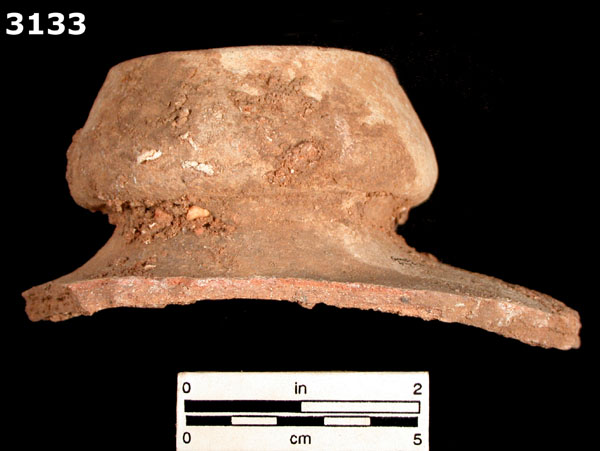View all examples of OLIVE JAR, MIDDLE STYLE

| Type Name: | OLIVE JAR, MIDDLE STYLE |
| Type Index: | UNGLAZED COARSE EARTHENWARE |
| Production Origin: | SPAIN |
| Date Range: | 1560-1800 |
| Defining Attributes: |
Paste is coarse with complete compaction and medium sand temper. It ranges in color from light to dark terra-cotta. Well-fired examples are buff-colored. Vessel wall thickness ranges from 10 to 12mm. Wide, smoothed throwing ridges are often evident on the interior surfaces. Exterior surfaces are poorly smoothed, with a pale firing effluvium on the surface, and a “freckled” appearance created by the mineral temper. Lead glazing, usually green, can be present on the interior and/or exterior. Yellow, white, and "gunmetal" blue glazing have also been recorded Form varies, but is typically a round bottomed, elongated oval with variously-shaped “doughnut ring” neck applied. No handles are present. |
| Vessel Forms: |
STORAGE JAR |
| Comments: | Middle-style Olive Jars are the most widely distributed and frequently occurring Olive Jar form. John Goggin distinguished three basic body types for the middle-style jars. "A" type have a height ranging from 52 to 58 cm and a diameter of 22 to 29.5cm. "B" type have a height of 23 to 29cm and a diameter of 20 to 23cm. "C" type are apparently uncommon; the only example measured by Goggin was 26.6cm high and 12.6cm in diameter. In 1985, Stephen James added a new body type not previously described. "Form III" is distinguished by a globular body, flat concave base, and a ring neck with a pronounced lip. Other chronological refinements based on form can be found in Marken (1994 ) and Avery (1997) |
| Published Definitions: | Goggin 1960: 11-17, James 1985: 25-26, Deagan 2002: 33-34; Marken 1994; Avery 1997 |